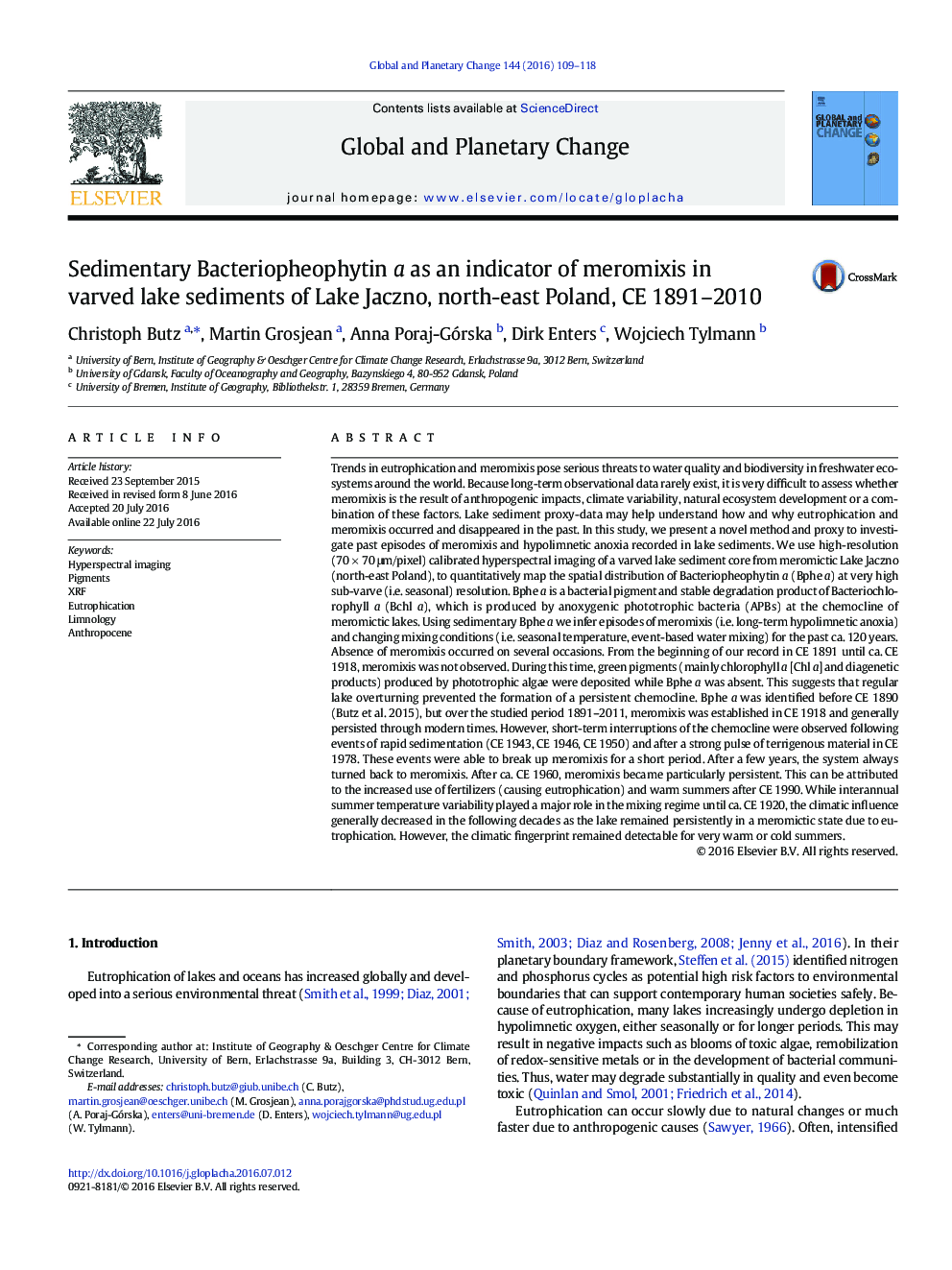| کد مقاله | کد نشریه | سال انتشار | مقاله انگلیسی | نسخه تمام متن |
|---|---|---|---|---|
| 4463273 | 1621638 | 2016 | 10 صفحه PDF | دانلود رایگان |
• Bacteriopheophytin a, a new sediment proxy for meromixis in lakes.
• Hyperspectral imaging, a novel tool for non-destructive, high-resolution biogeochemical analysis of sediment cores.
• High-resolution reconstruction of meromixis in Lake Jaczno, Poland, for the past 120 years.
Trends in eutrophication and meromixis pose serious threats to water quality and biodiversity in freshwater ecosystems around the world. Because long-term observational data rarely exist, it is very difficult to assess whether meromixis is the result of anthropogenic impacts, climate variability, natural ecosystem development or a combination of these factors. Lake sediment proxy-data may help understand how and why eutrophication and meromixis occurred and disappeared in the past. In this study, we present a novel method and proxy to investigate past episodes of meromixis and hypolimnetic anoxia recorded in lake sediments. We use high-resolution (70 × 70 μm/pixel) calibrated hyperspectral imaging of a varved lake sediment core from meromictic Lake Jaczno (north-east Poland), to quantitatively map the spatial distribution of Bacteriopheophytin a (Bphe a) at very high sub-varve (i.e. seasonal) resolution. Bphe a is a bacterial pigment and stable degradation product of Bacteriochlorophyll a (Bchl a), which is produced by anoxygenic phototrophic bacteria (APBs) at the chemocline of meromictic lakes. Using sedimentary Bphe a we infer episodes of meromixis (i.e. long-term hypolimnetic anoxia) and changing mixing conditions (i.e. seasonal temperature, event-based water mixing) for the past ca. 120 years. Absence of meromixis occurred on several occasions. From the beginning of our record in CE 1891 until ca. CE 1918, meromixis was not observed. During this time, green pigments (mainly chlorophyll a [Chl a] and diagenetic products) produced by phototrophic algae were deposited while Bphe a was absent. This suggests that regular lake overturning prevented the formation of a persistent chemocline. Bphe a was identified before CE 1890 (Butz et al. 2015), but over the studied period 1891–2011, meromixis was established in CE 1918 and generally persisted through modern times. However, short-term interruptions of the chemocline were observed following events of rapid sedimentation (CE 1943, CE 1946, CE 1950) and after a strong pulse of terrigenous material in CE 1978. These events were able to break up meromixis for a short period. After a few years, the system always turned back to meromixis. After ca. CE 1960, meromixis became particularly persistent. This can be attributed to the increased use of fertilizers (causing eutrophication) and warm summers after CE 1990. While interannual summer temperature variability played a major role in the mixing regime until ca. CE 1920, the climatic influence generally decreased in the following decades as the lake remained persistently in a meromictic state due to eutrophication. However, the climatic fingerprint remained detectable for very warm or cold summers.
Journal: Global and Planetary Change - Volume 144, September 2016, Pages 109–118
